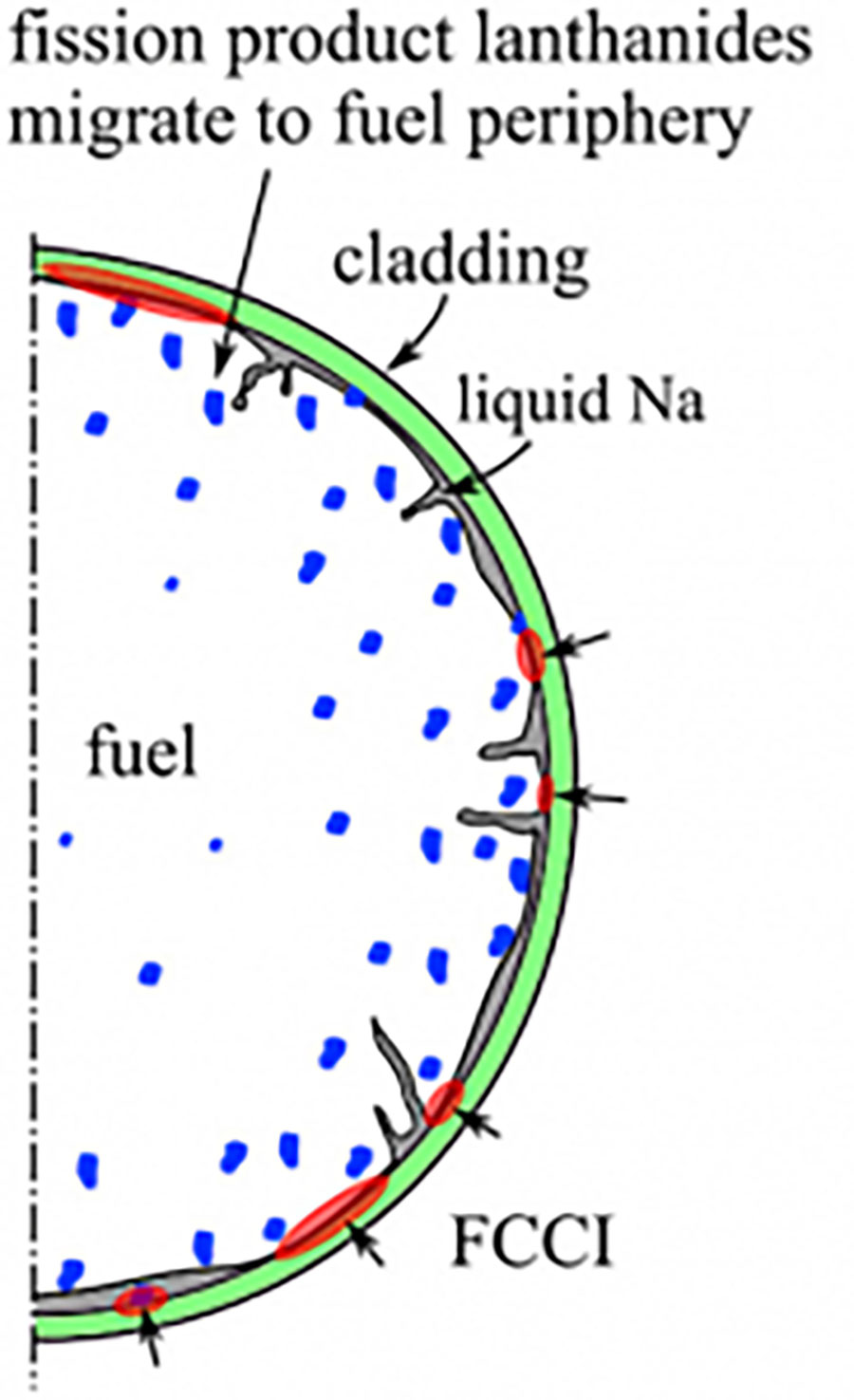Research
1. Materials Compatibility :
- Between Fuel and Coolant
- Fuel-coolant chemical reactions, source term release from fuel to coolant
- Between Fuel and Cladding
- Fuel-cladding chemical interaction (FCCI) is one of the major cladding degradation of advance metallic fuel because of the chemical reactions between nuclear fuel/fission products and stainless steel cladding
- Between Coolant and Cladding/Structural Materials
- Material degradation and corrosion by coolant, for example, Nickel-based alloys can not be used as structrural materials for liquid-lead/lead-bismuth-cooled reactor because the high solubility of Ni in the liquid metal/alloy
- Between Fuel Pin Gap materials and Fuel
- Liquid lead can not be used as gap material for oxide fuel, because of the transfer of oxygen

2. Nuclear Fuel Cycle :
- Used Fuel Dry Storage
- Canister degradation, cladding hydrogen embrittlement
- Electrochemical Separation
- Used Metal fuel, oxide fuel and nitride fuel treatment
- Molten salt reactor (MSR) on-line purification
- Coolant impurity removal
- Advanced Nuclear Coolant Chemistry Control
- Oxygen control in Liquid metal, Redox control in molten salt

3. Nuclear Coolants:
- Liquid metal (Na, Pb, Pb-Bi)
- Corrosion (loop global corrosion, local corrosion, etc)
- Interactions with fuel (Material release from the fuel)
- Chemistry control (oxygen control)
- Source term release (solubility measurement, thermodynamic properties, transport in the coolant, retention capability)
- Molten Salt (Chloride Salts, Fluoride Salts)
- Corrosion (corrosion mechanisms, materials transport)
- Physical properties (density, viscosity, etc)
- Chemistry control (fission products chemistry, redox control)
- Source term release (fission product properties, retention capability)
- High-temperature Water
- Stress corrosion cracking
- Water-fuel interaction

4. Fuel Materials:
- Metal Fuels (U-Zr)
- Interactions with coolant (source term release)
- Fuel-cladding-Chemical interactions (FCCIs)
- New fuel alloy development (adding additives for mitigating FCCIs)
- Pyroprocessing used metal fuels
- Nitride fuel
- Interactions with coolant
- Pyroprocessing used nitride fuels
- Oxide fuels
- Interactions with coolant
- Source term release
- Novel cladding materials development (MMLC) for accident to tolerant fuels



